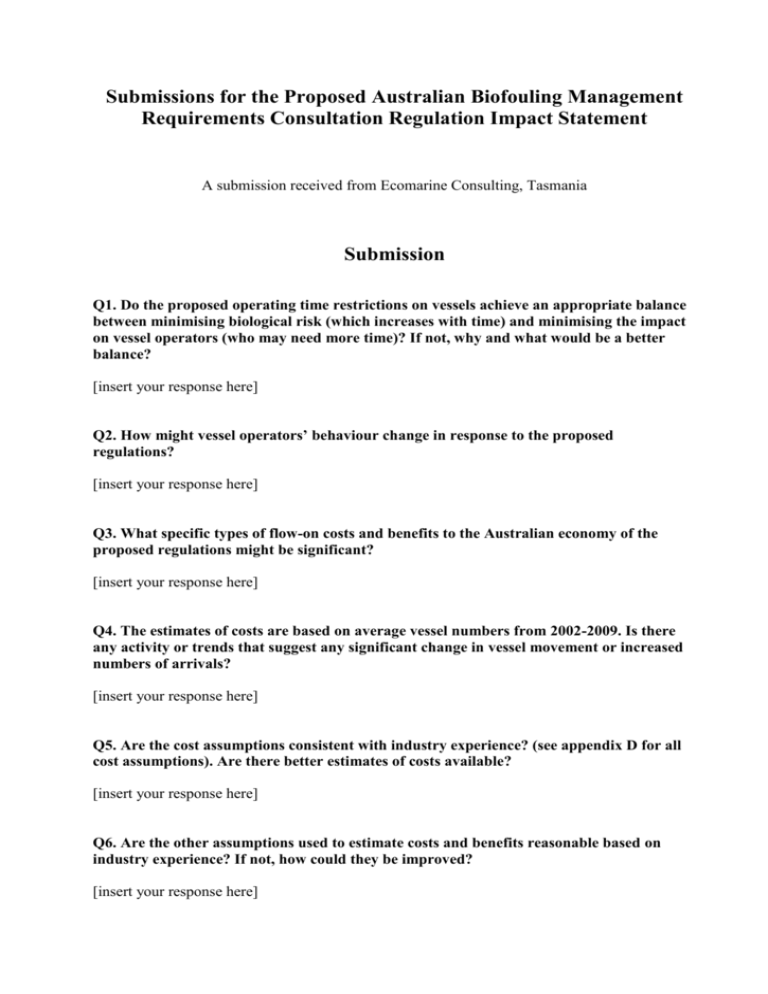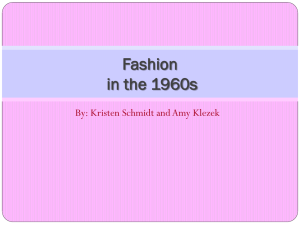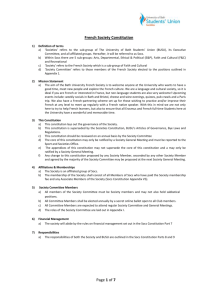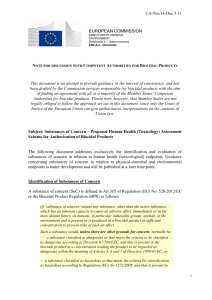Submissions for the Proposed Australian Biofouling Management
advertisement

Submissions for the Proposed Australian Biofouling Management Requirements Consultation Regulation Impact Statement A submission received from Ecomarine Consulting, Tasmania Submission Q1. Do the proposed operating time restrictions on vessels achieve an appropriate balance between minimising biological risk (which increases with time) and minimising the impact on vessel operators (who may need more time)? If not, why and what would be a better balance? [insert your response here] Q2. How might vessel operators’ behaviour change in response to the proposed regulations? [insert your response here] Q3. What specific types of flow-on costs and benefits to the Australian economy of the proposed regulations might be significant? [insert your response here] Q4. The estimates of costs are based on average vessel numbers from 2002-2009. Is there any activity or trends that suggest any significant change in vessel movement or increased numbers of arrivals? [insert your response here] Q5. Are the cost assumptions consistent with industry experience? (see appendix D for all cost assumptions). Are there better estimates of costs available? [insert your response here] Q6. Are the other assumptions used to estimate costs and benefits reasonable based on industry experience? If not, how could they be improved? [insert your response here] Q7. The methodology for estimating the economic value at risk relies on a series of assumptions about the value of commercial fishing and the Great Barrier Reef. Are there more plausible assumptions or approaches that could be used? [insert your response here] Q8. What other evidence is there of the potential impacts of non indigenous marine species becoming established in Australia? [insert your response here] Q9. What is industry’s view of the likely effectiveness of a voluntary approach to reducing the risks associated with biofouling compared to a regulatory approach? [insert your response here] Q10. Do you have any other comments on the Regulation Impact Statement? Care is needed to achieve compatibility between the cost estimates for vessel inspections / practical considerations and the list of Species of Concern being targeted. Some of the 56 SOCs listed are microscopic or otherwise unlikely to be identified through a diver or video survey. Likely examples include the sea lettuce Ulva pertusa, isopod Sphaeroma annandalei, Baikalian amphipod Gmelinoides fasciatus, Haplosporidian parasite Bonamia ostreae, parasitic nematode Anguillicola crassus, diatom Corethron criophilum, amphipod Ampelisca abdita, Florida crangonyctid Crangonyx floridanus, amphipod Gammarus tigrinus, green sea fingers Codium fragile atlanticum, brown algae Fucus evanescens, grey encrusting sponge Gelliodes fibrosa, as well as a range of barnacles. Additional listed SOCs may also fall into this category. These species may not be readily identified because of one of the following reasons: They are microscopic They would not be readily sampled without specialist targeted techniques They could not be readily distinguished from other related species without specialist taxonomic expertise The SOCs being targeted can have a very large influence on the cost of an inspection survey (as well as feasibility within necessary timeframes), and hence it may be advantageous to resolve the issue of SOCs at an early stage to confirm that estimated inspection costs are as accurate as possible. One potential approach is to perform an analysis to divide the SOCs into categories, such as: 1. Species readily identified in situ by a non-taxonomic expert on the basis of a video survey (where the video assessor has access to basic identification tools) [although noting that for verification/evidence purposes, it would be necessary to supplement such an identification with acquisition of specimens] 2. Species readily identified by a non-taxonomic expert (with assistance from basic identification tools) upon obtaining a specimen – where suspected specimens could be readily obtained without use of specialist techniques (i.e. immobile specimens that could be readily detected and physically dislodged from the fouled surface by a diver) 3. Species readily identified by a non-taxonomic expert (with assistance from basic identification tools) upon obtaining a specimen – but where acquiring specimens would require use of specialist techniques (i.e. techniques other than physical dislodgement of easily detected immobile species; e.g. techniques to target mobile species within the fouling community) 4. Species that could only be identified by a taxonomic expert, with digital photos adequate where suspected specimens could be readily detected and obtained without use of specialist techniques 5. Species that could only be identified by a taxonomic expert, with digital photos adequate and where acquiring specimens would require use of specialist techniques 6. Species that could only be identified by a taxonomic expert through laboratory analysis of specimens, collected through either specialist or non-specialist techniques [whatever field collection techniques are applicable, it is suspected that species falling into this category would need to be excluded due to timeframes involved] The types of surveys/analysis required to target each species could then be determined, such as: A. B. C. D. E. Video survey [supplemented by specimen collection if detected] Diver observation survey – no specialist survey techniques Diver or other survey – specialist techniques A, B or C above requiring transfer of digital images to a taxonomic expert A, B or C above involving collection of samples for laboratory analysis Decisions could be made about the level of complexity of surveys and hence the SOCs being targeted depending on the vessel type. For example, for yachts, it may be decided that only species that could be identified through a video survey or by a non-taxonomic expert diver using non-specialist techniques would be targeted. This decision about techniques to be applied would be driven primarily by considerations such as risk, expense and ease of survey, and may restrict the list of target SOCs to just a small portion of the 56 currently listed in the case of yachts. It may be determined that additional more complex survey techniques are viable and appropriate for commercial vessels and so decisions could be made about which techniques should be applied on the basis of risk, cost and feasibility (e.g. as per above, it is unlikely to be feasible to include species that require a lengthy wait for laboratory sample analysis due to decision timeframes). If the above approach resulted in a very minimalist list of SOCs for yachts, for example, then perhaps an approach could be applied that combines the use of SOCs with the approach used elsewhere based on levels of fouling. i.e. Based on clear criteria about level of fouling, a management decision could be made that a vessel needs to be treated even though an SOC cannot be detected, recognising that many of the SOCs cannot be detected using the limited techniques applied to yachts. The above are ideas and examples for consideration; the important thing is that a standard list/lists of SOCs and associated survey methodologies are developed and applied at an early stage which are practical and achievable within estimated budgets and other restraints. This will avoid the need for subsequent lengthy negotiations between vessel operators/DAFF and inspection service providers about how to approach particular surveys. Two other related considerations are relevant here: The need for auditing of inspection reports – to ensure they are being performed adequately and targeting the correct suite of SOCs Identifying criteria to ascertain whether inspections performed overseas have been performed to a standard considered adequate or comparable to that being applied in Australia.







